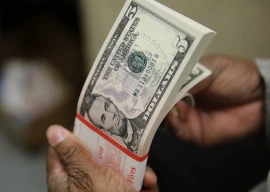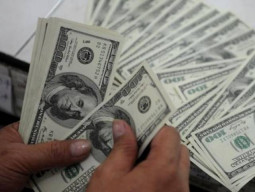
The government received $14.5 billion in foreign loans during the first eight months of current fiscal year, higher by 77% over the same period of previous year, but the funds remained insufficient to prevent the official foreign exchange reserves from falling continuously.
Total loans received by the government of Prime Minister Imran Khan from July through February of the current fiscal year amounted to $14.5 billion, according to data of the Ministry of Economic Affairs and the State Bank of Pakistan (SBP).
These include disbursement of $13 billion by the international creditors and nearly $1.5 billion by the overseas Pakistanis.
The net disbursements in February were $1.32 billion, including $1 billion released by the International Monetary Fund (IMF) after completion of sixth review of Pakistan’s economy.
The Ministry of Economic Affairs reported on Friday that it booked gross foreign loans of $12 billion in July-February of fiscal year 2021-22.
The amount is equal to 100% of its annual estimate published in the budget documents, indicating that foreign borrowing in the fourth year of Pakistan Tehreek-e-Insaf (PTI) government may remain one of the highest in the country’s history.
SBP data showed that it also received nearly $1.5 billion in highly expensive foreign loans under the Naya Pakistan Certificates – a new borrowing instrument introduced by the PTI government to take more foreign loans.
Around 89% of the new gross foreign loans were aimed at bridging the budget deficit and supporting the foreign exchange reserves.
However, the reserves held by the central bank dropped below $15 billion, by the end of last week, despite taking massive loans from almost every available source.
READ Foreign loans soar to $10.4b in Jul-Dec
The $1.5 billion loan under the Naya Pakistan Certificates was acquired at 7% interest rate in dollar terms while the return in local currency was up to 11%.
As a result, the cumulative gross foreign loans secured in the first eight months of current fiscal year jumped to a record $14.5 billion, up $6.3 billion (or 77%) from the same period of previous fiscal year, showed the official statistics.
The country is sliding deeper into the debt trap and the government is now in search of new debt instruments after the existing debt products seemed insufficient to meet the growing borrowing requirements.
Owing to the increasing reliance on loans to enhance the foreign currency reserves and finance the budget deficit, the cost of debt servicing has gone up significantly.
This month, the Economic Coordination Committee (ECC) of the cabinet approved a supplementary grant of Rs135 billion to just cover the cost of debt accumulated through the Naya Pakistan Certificates.
An amount of $2.6 billion was received in foreign commercial loans from banks in the current fiscal year.
The government borrowed $1.1 billion from Dubai Bank. Another loan of $487 million was acquired from Standard Chartered Bank, London, according to the economic affairs ministry. A financing of $343 million was secured from Credit Suisse AG.
The average maturity of external debt deteriorated from last year’s level of seven years to six years and eight months by the end of June 2021 due to the government’s decision to take short-term loans including $3 billion from Saudi Arabia.
The share of foreign commercial loans has already increased from 11% to 13% in the external public debt as of June last year.
Official statistics showed that bilateral lending to Pakistan for project financing remained at only $123 million, excluding the publicly guaranteed debt. This included $100 million in project lending by China.
The Ministry of Economic Affairs also booked $832 million worth of publicly guaranteed debt, which China disbursed for Karachi’s nuclear power plants, including the disbursement of $531 million last month.
Pakistan also obtained loans worth around $3.4 billion from multilateral creditors. Amongst the multilateral development partners, the Asian Development Bank (ADB) disbursed $1.1 billion during the July-February period.
The World Bank released $1 billion in the eight months under review, while the Islamic Development Bank (IDB) disbursed $1.2 billion for crude oil imports.
The government also raised $2 billion by floating long-term bonds, including $1 billion through the most expensive Sukuk in Pakistan’s history at nearly 8% return.
Published in The Express Tribune, March 26th, 2022.
Like Business on Facebook, follow @TribuneBiz on Twitter to stay informed and join in the conversation.


1736298376-0/Untitled-design-(56)1736298376-0-165x106.webp)

























COMMENTS (2)
Comments are moderated and generally will be posted if they are on-topic and not abusive.
For more information, please see our Comments FAQ